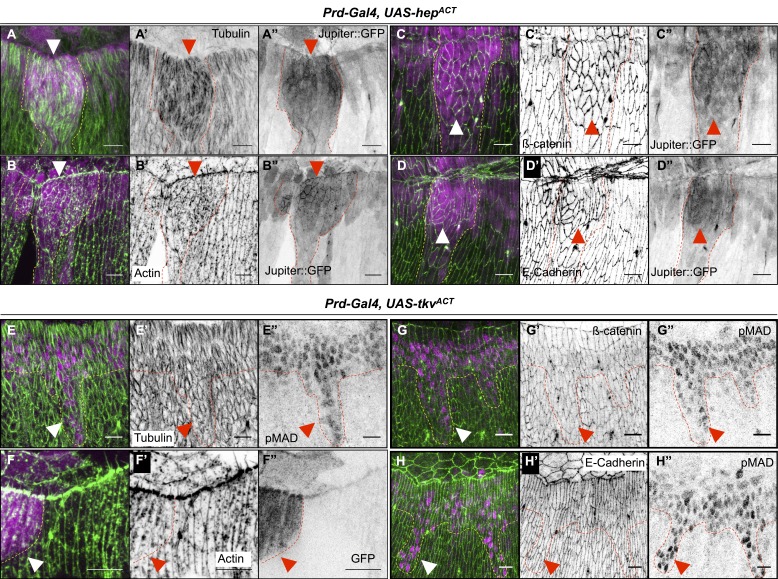Figure 5.
Ectopic JNK but not ectopic DPP activity leads to accumulation of cytoskeletal components crucial for DC. (A–D″) Prd-Gal4, UAS-hepACT, Jupiter::GFP embryos marked for Jupiter::GFP (magenta in A–D; gray in A″–D″) and α-tubulin (green in A; gray in A′) or actin (green in B; gray in B′), β-catenin (green in C; gray in C′), or DE-Cadherin (green in D; gray in D′). In all panels, the ectopic JNK activity is marked by the ectopic accumulation of Jupiter::GFP (arrowheads) and is delineated by dotted lines. Ectopic JNK signaling leads to accumulation of microtubules, β-catenin, DE-Cadherin, and actin. (E–E″) Prd-Gal4, UAS-tkvACT embryo stained for phospho-Mad (magenta in E; gray in E″) and α-tubulin (green in E; gray in E′). (F–F″) Prd-Gal4, UAS-tkvACT, UAS-GFP embryos marked for GFP (magenta in F; gray in F″) and actin (green in F; gray in F′). (G–H″) Prd-Gal4, UAS-tkvACT embryos stained for phospho-Mad (pMad; magenta in G and H; gray in G″ and H″) and β-catenin (green in G; gray in G′) or E-Cadherin (green in H; gray in H′). In all panels, the ectopic DPP activity is marked by either ectopic phospho-Mad nuclei or the presence of GFP (arrowheads) and is delineated by dotted lines. Ectopic DPP signaling activity does not lead to any accumulation of microtubules, β-catenin, E-Cadherin, or actin. Bars, 10 µm.

